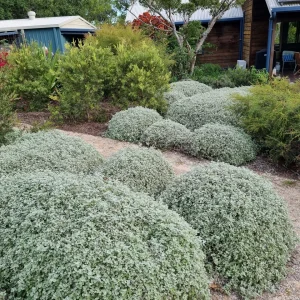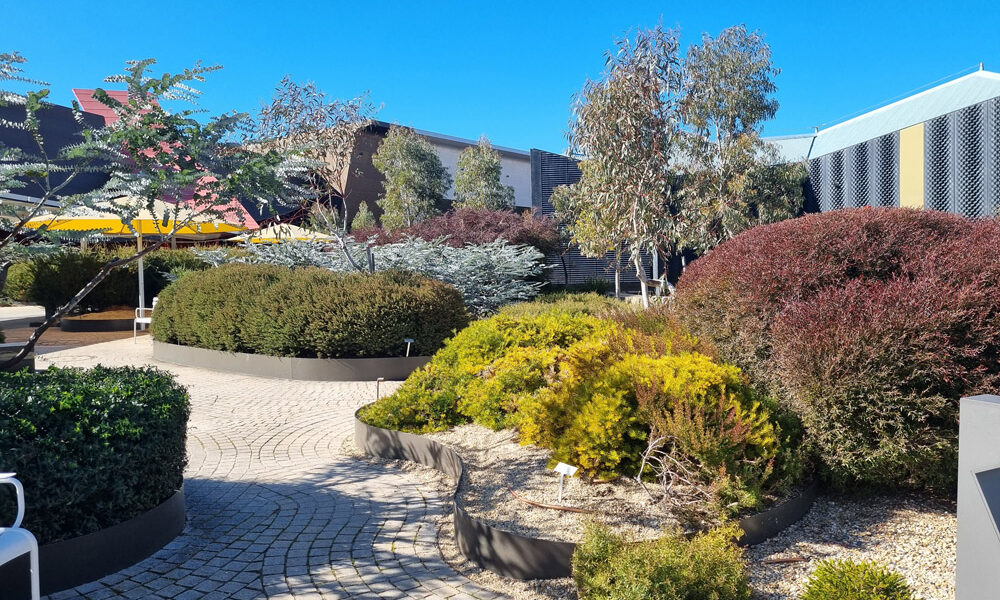Let your creativity flow when exploring mass planting
By Patrick Regnault
Mass planting has been used to great effect over a long period of time, sometimes with flair. There are inconveniences with mass planting such as lack of diversity and monotony. Both can be overcome if we use layers and let our creativity flow.
Group planting has many advantages; it simplifies maintenance, it is eye catching, and reduces time when selecting plants. It is very suitable for public spaces, large gardens and even medium size ones. For small gardens, formal style plantings could be seen as a form of mass planting but this does not fit the definition in this context.

Let us look at the drawbacks and see which measures we can take to avoid them. Monotony is the most common mistake when using group plantings, with rigid foliage giving a static, nearly plastic feel to the area. If we work with the elements such as light and air, we can make a bank of grasses look like it is ever-changing. There is beauty and interest in wind moving through grasses and light reflecting from the foliage. A pandanus rising out of a bed of Lomandra Nyalla gives a contrast of colours and height that brings out the best of the two species of plants. Sometimes the use of materials such as rocks, sculptures or other vertical structures can provide enough of a contrast to break the monotony of a large border of a single species planting
Lack of diversity of plants themselves, as well as the reduced number of species visiting or living in the planting, can no longer be regarded as suitable. The biodiversity loss that we are facing now and increasing into the future with global warming and habitat destruction, do we have the luxury of creating monocultures without the awareness of biodiversity?
For a long border in a park situation, mass planting in ever-changing waves of species suited to the local fauna can be attractive and educational when signage is provided. For it to be successful the designer will need to seek understanding of the animal species that are likely to use the park and their particular requirements.
Large group plantings can also be sculptural in their own right. Helichrysum petiolare can be shaped to create an interesting and somewhat playful border to a long path. If we add a dark foliage background and blue flowers, we may have an arresting combination.

Mass planting simplifies maintenance but requires careful planning to make sure the plant choice is suited to the environmental conditions, and requires monitoring for pests and diseases that are likely to come with a monoculture. Gaps occurring in the planting at a later stage will need to be addressed lest we end up with unsightly gaps in the planting.
Group planting is also suitable for medium gardens as there is enough space to incorporate it in a larger planting scheme. The scale is not the same and particular attention will need to be given to its integration to the surrounding plants, structures and borrowed landscape to really make it work. It seems to perform better when there is a sense of expanse, be it grass, sky or sea. Long tall walls can be a substitute to give this kind of planting the necessary background.
Choosing plants for a garden or a park is very time consuming unless, as seen much too often, the plant palette of the designer is reduced to a few well-trodden species. Who wants to see a motorway style planting in their parks or their town? Layered large clusters of plants can create that striking effect that will catch people’s attention, but this requires initial investment in research on plants and colour combinations. In the long term, that will save you time in design, costing and sourcing of plant materials, and if you master the art of plant shapes and colours for all seasons you will be able to create the closest thing to a living painting.
Patrick Regnault FAIH RH0062
Interactive Landscapes
E: patrickregnault@hotmail.com
Main photo: Shapes and colours in mass planting cannot be overlooked (Image: Patrick Regnault)

